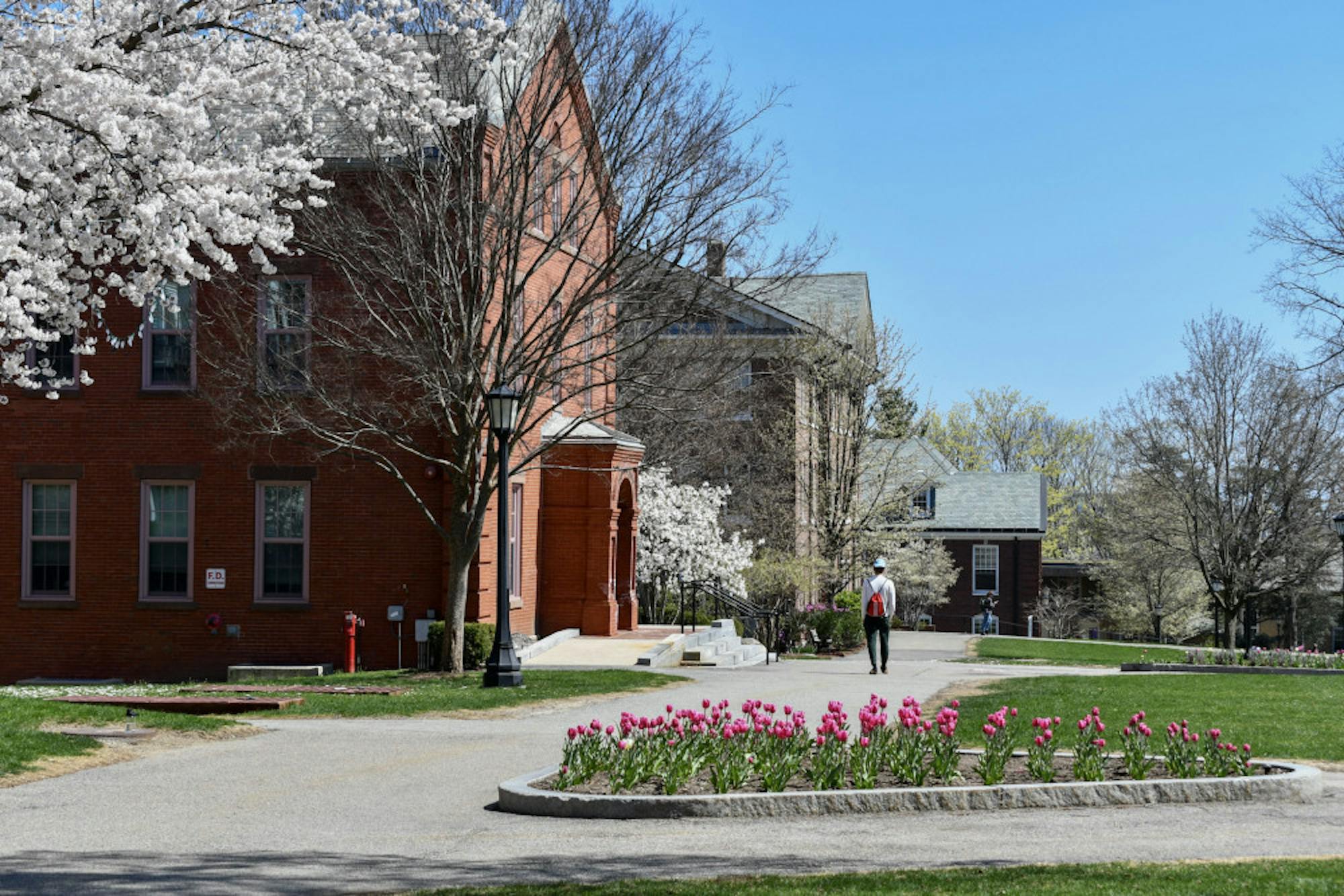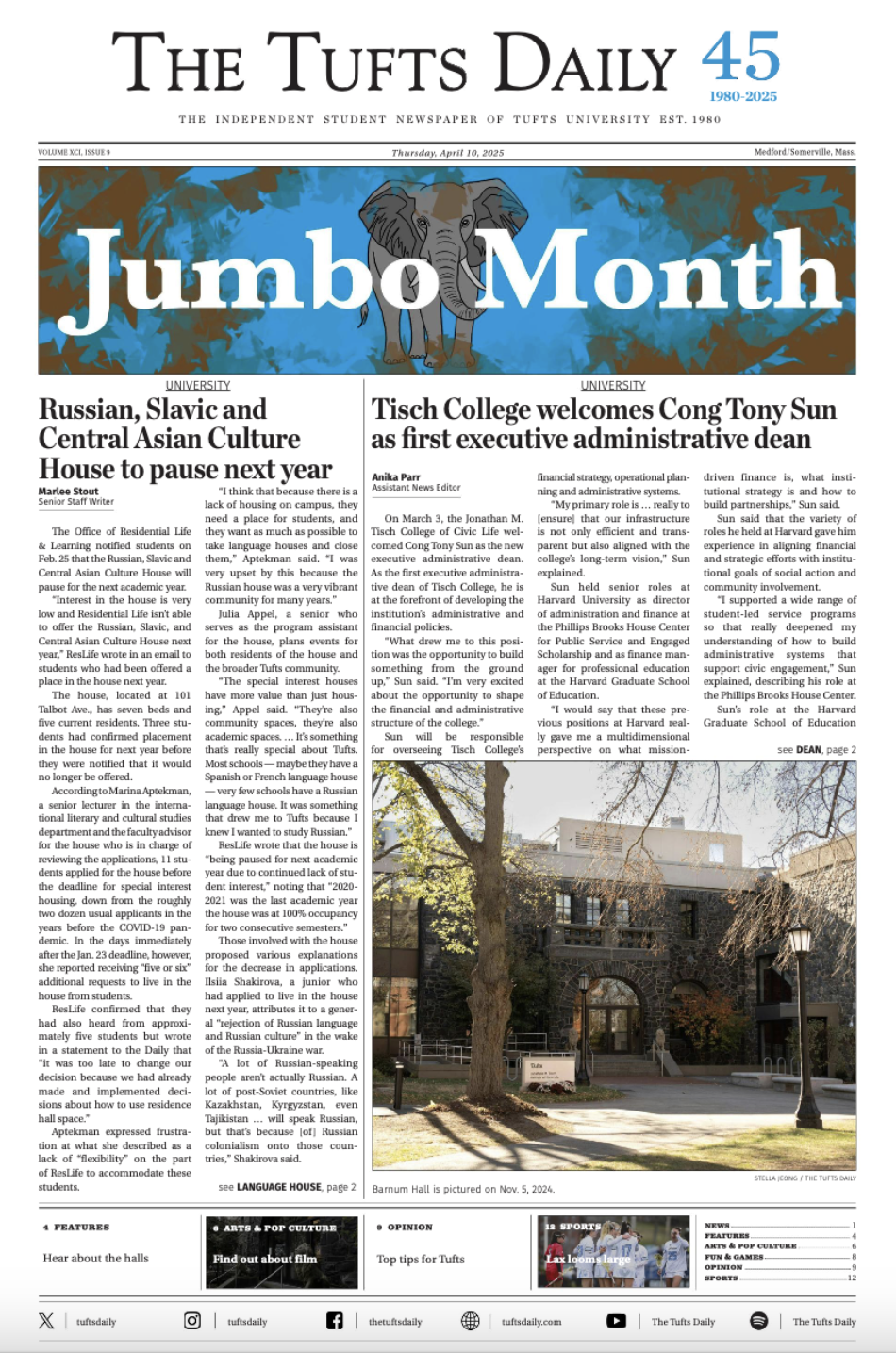Tufts University has no doubt brightened its “light on the hill” since its establishment in 1852 through its development across the Medford and Somerville area. Starting from the present-day Ballou Hall, the university has spread its roots throughout the area with newer buildings, like the Collaborative Learning & Innovation Complex at 574 Boston Avenue.
The campus has responded accordingly to changes in our world, including many positive aspects but at the same time contributing to rising local housing costs and proliferation into nearby communities. For Jason Aliotta, despite the larger footprint the campus holds, alumni still feel that the intimate campus character is not lost to time.
“Looking back on it … the experience that I had living on campus was amazing,” Jason Aliotta (A’93, M’99), a Tufts alum whose daughter is a current Tufts first-year, said.,“[Tufts is] a contained campus, yet at the same time, you feel like you are part of the community with Somerville and Medford. [You also] have incredible accessibility to Boston, so … it really is the best of [both] worlds. I can’t imagine having gone to another type of university.”
Aliotta, who is an associate professor of medicine at the Warren Alpert Medical School of Brown University, has found that the university has changed positively in some respects. For one, he has found the administrative positions, especially the university president, to be far more accessible and engaging.
“[When I was a student at Tufts], we had less accessibility to the administration, certainly the president, both in person [and through] any form of media, other than announcements that we would get via email which was still even at the time in its infancy,” Aliotta said.
Now, Aliotta notes that the university is far more engaging through events like Matriculation Day, at the start of the fall semester.
“I went to my daughter's matriculation day, and I thought that that was one of the coolest events that I have ever been to at Tufts,” Aliotta said. “It was amazing to hear about … the academic achievements and the diversity of the incoming class. It was amazing to hear the a cappella group singing: They are just as amazing as they are now as they were back when I was in school. … It made us feel like we are truly part of the Tufts community.”
As the university has grown, Tufts has attempted several solutions to provide adequate on-campus housing, but it was not always so hard to live on campus.
Klaus Bartels (E’72) is an adjunct faculty in the math and engineering departments at San Antonio College in San Antonio, Texas. He has interviewed prospective Tufts students for more than 15 years. Nearly 50 years ago, he lived on campus in Houston Hall and Hill Hall, sponsored mainly by a three-year scholarship from the Air Force as a student in the ROTC program.
Juli Lin (A’22), a recent graduate and former resident of Bush Hall during her first year at Tufts, followed the standard Tufts’ residential timeline, living on-campus for the first two years and off-campus for the last two years. In an email to the Daily, she described the process that she took to secure her off-campus apartment.
“I lucked out a little bit with off campus housing,” Lin wrote. “I joined a house of 3 seniors in my junior year, and ‘inherited’ their apartment after they [graduated, which enabled me to fill] it with my friends so I did not have to deal with the housing search, which saved a lot of stress.”
Tufts continues to sustain a strong on-campus residential presence. In fact, the university has plans for a new apartment-style housing and retail development for advanced undergraduates to be completed by fall 2025 around Boston Avenue.
Aliotta noted that alumni like him are hesitant about the construction and its effects on the Medford and Somerville community.
“[I am] skeptical [and] I do not know how much it is going to benefit the community at large,” Aliotta said. “I think [the building]’s going to certainly benefit the university much more [in] that it can provide stable housing [for more students]. The cynical part of me [finds that the construction would let the university] charge [students] for housing that would ordinarily leave and find housing off campus.”
A benefit of off-campus housing could be greater integration between Tufts and the Medford and Somerville area, especially through different ventures targeting students.
“[It is] good for Tufts students and the Tufts community to expand further outside the walls,” Aliotta said. “In some ways, I think it certainly benefits the community [because] new businesses have opened up that cater to the student population.”
The forces pushing Tufts students outward from the campus naturally escalate the price of housing. When visiting Tufts this summer, Aliotta found that areas around Davis and Teele Square have increased their costs of living.
“[It is interesting to see] the stretch of land just south of the Tufts campus towards Davis Square and Teele Square [change],” Aliotta said. “That area was much more affordable, much more working-class [and] blue-collar area. I [now] feel like [has] changed in many ways. The real estate values are much higher, [and] I think it has probably priced out a lot of the folks that have traditionally lived in that area.”
The local gentrification witnessed by Aliotta has seen small, 2,500 square-foot homes in the immediate areas of Tufts be valued at over $1 million.
Back within Tufts’ campus boundaries, older alumni have noted that the Academic Quad has not changed much since their studies with the exception of the Olin Center for Language and Cultural Studies being built in 1990.
The Carmichael Dining Center now offers gluten-free food, which Aliotta remarks is a major improvement.
“The dining hall [in Carmichael Hall] is now where all the gluten-free food is, which is obviously a huge change,” Aliotta said. “The food back when I was there … was not terribly interesting [with little] variety. Oftentimes, the plethora of cereal options was better … than the hot dinners.”
New to Bartels are the renovated Science and Engineering Complex, the Joyce Cummings Center and the Green Line Extension at the intersection of Boston and College Avenue. The presence of the former two represents the major paradigm of STEM emphasis that Tufts has engaged in, as they both primarily house those subjects. The Tufts engineering program that Bartels knew was drastically different.
“There wasn’t much of a graduate program at [Tufts] back then,” Bartels said. “That is one of the reasons I went to MIT to get my master's in electrical engineering. [Tufts professors are now] getting involved in research, which is great. So … there are [probably] not as many teachers teaching as much the undergraduate [introductory] courses … as there used to be, but … that is probably fine. … There [are] more research opportunities now, which is great for students.”
The Joyce Cummings Center has been a major recent addition to campus and academic life.
“I think [the Joyce Cummings Center] opened a little before I graduated,” Lin wrote. “I recall spending some time in the JCC during finals, and it was an awesome study space. I’m definitely jealous that Starbucks opened after graduating though. It is a beautiful space and so conveniently located! I do wish it had opened earlier, [since] I lived so nearby it and would have gone to study there frequently.”
From his own recollection and interactions with prospective students, Bartels finds that these expansionary efforts affect the physical composition of campus, yet he still perceives Tufts to have retained its original character.
“One of the things I think has not changed at Tufts [is that] it’s a smaller family, community where everyone … [is] helping students succeed,” Bartels said.






